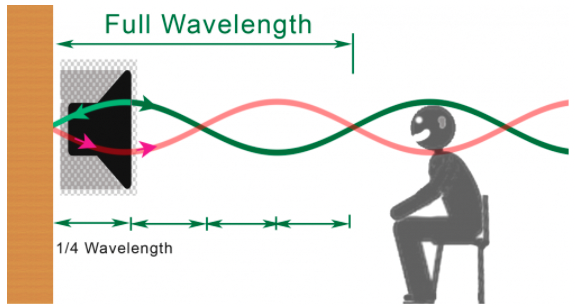

As sound waves bounce back and forth between parallel surfaces, the waves add and cancel at various locations in the room. Sound waves bouncing back and forth between parallel floors, ceilings, and walls create room modes. Obviously, we all work in rooms that are considered acoustically small! In these spaces (like concert halls or indoor arenas) the reflectivity of the space-the reverberant field dominates the acoustics so we don’t worry about first reflections and room modes. Rooms are considered large if they have dimensions over 10 meters per length, width, and height. Small rooms also have loud (higher frequency) reflections off of nearby surfaces that confuse the direct sound of the speakers. Above Schroeder, higher frequency sound behaves like “rays” as if lasers are reflecting around the room.Īcousticians define a small room as a space whose acoustics are dominated by the detrimental effects of room modes that are also referred to as “standing waves” because they seem to stand still in certain locations in the room. This low-frequency sound energy propagates in “waves” and is modal. Below the Schroeder frequency, the entire room acts as a resonant cavity with low-frequency sound waves bouncing around creating nodes and anti-nodes. For most small rooms, the Schroeder Frequency is somewhere between 200 and 500 Hz. The behavior of sound in a small room can be divided into low frequencies and high frequencies, based on the Schroeder Frequency. Finished ceiling height in the US is typically 8 feet (2.5 m) and 2.2 m in the U.K.

These rooms usually measure in the range of between 2.5 m to 3.5 m (8 to 12 feet) wide by 2m to 3m (6 to 10 feet) high by 3 to 5 m (10 to 16 feet) long. Rooms used for personal studios are typically converted spare bedrooms, offices, or garages. Read on to learn to decode this information that is provided by room correction software. You can then improve the room’s acoustics to smooth out its frequency response before refining the sound with software like SoundID Reference.

The purpose of this article is to teach you to read a room’s frequency response curve and determine the likely causes of the frequency problems revealed by the analysis. There are many excellent resources (besides our site) to help you learn about acoustics that will be linked at the end of this article. Identifying the problems that stand in the way of attaining an accurate music monitoring system is a continuous learning process that is worthwhile to pursue. Interpreting and making practical use of the graphical results from measuring programs like Sonarworks’ SoundID Reference or AV Nirvana’s Room EQ Wizard (REW) requires a basic understanding of acoustic physics and the way sound behaves in a room like yours.


 0 kommentar(er)
0 kommentar(er)
